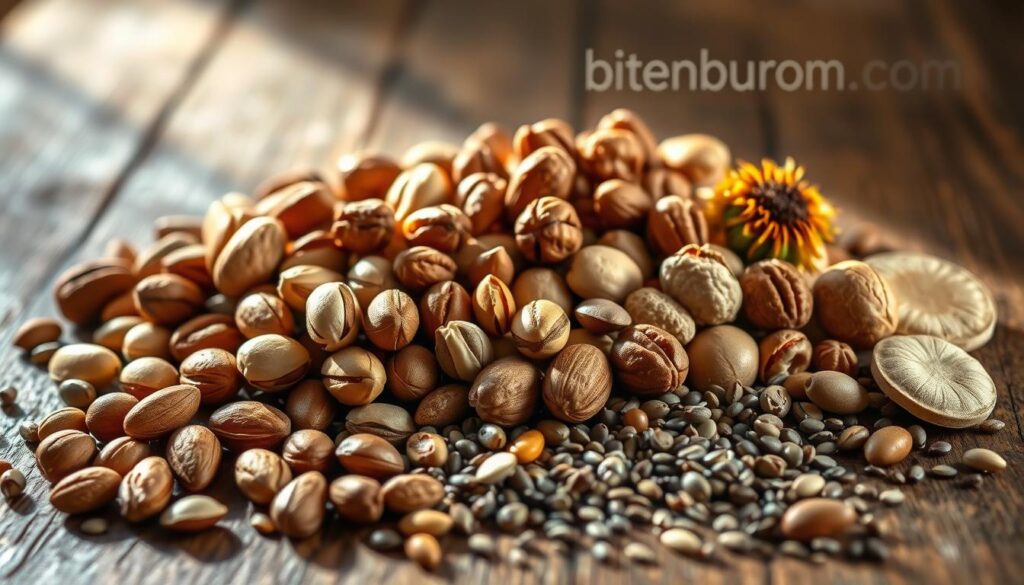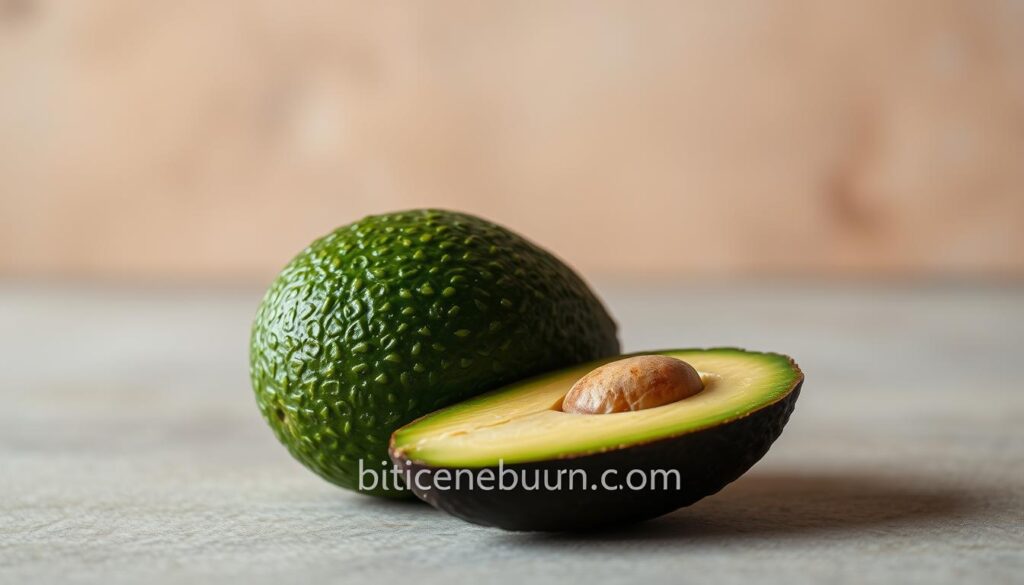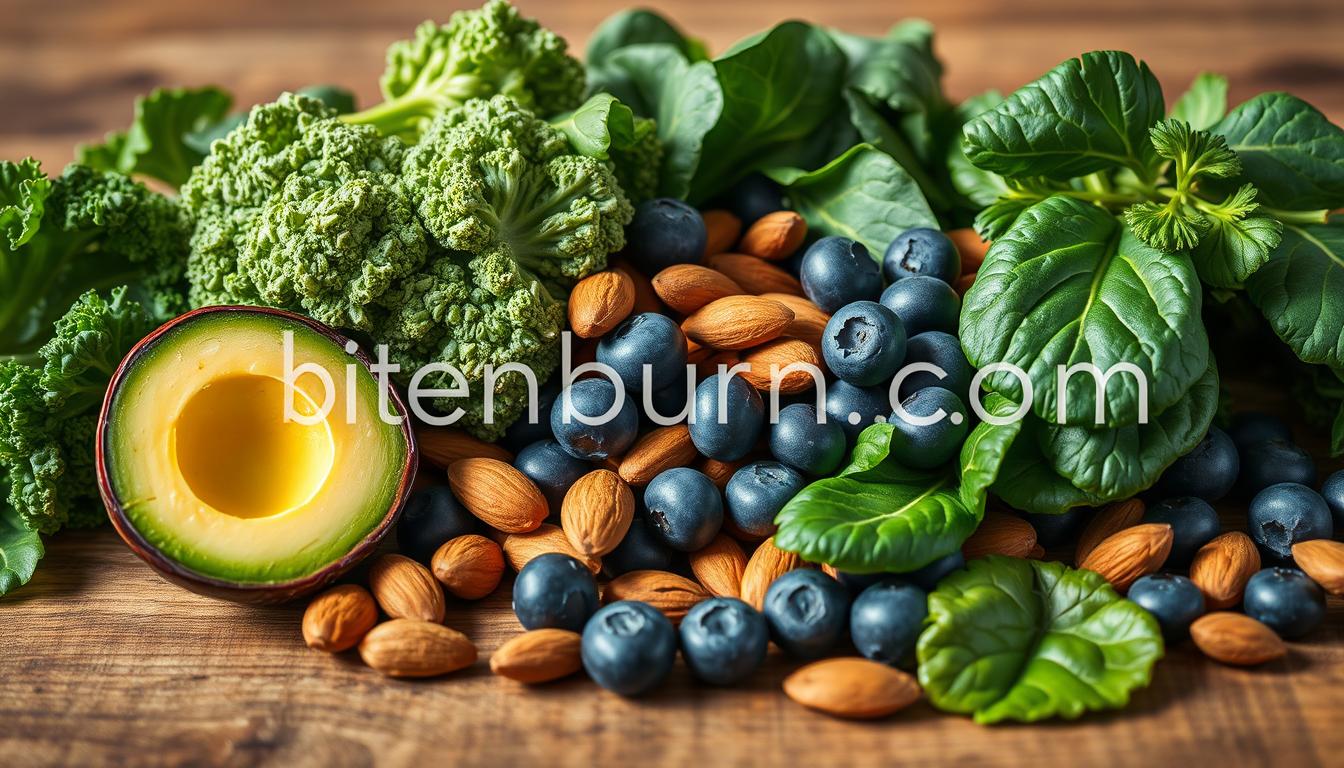Are you overlooking the most nutritious foods right in front of you? When it comes to superfoods, many of us think of exotic or trendy options. However, the truth is that some of the most powerful nutrient-dense foods are likely already in your pantry or fridge.
We’ve been led to believe that achieving optimal health requires a trip to a specialty store or a hefty investment in the latest super food trends. But what if the key to unlocking better nutrition lies in the everyday ingredients you’re already familiar with? By exploring the nutritional powerhouses hiding in plain sight, we can transform our diets without breaking the bank or embarking on a wild goose chase for the latest fad.
Key Takeaways
- Everyday ingredients can serve as powerful superfoods.
- Many nutritional powerhouses are likely already in your ktchen.
- Incorporating these foods can transform your health.
- Accessible foods deliver exceptional nutritional value.
- These kitchen staples support overall wellbeing and may help prevent chronic diseases.
The Power of Everyday Ingredients
Everyday ingredients can be superfoods, providing essential nutrients and health benefits. The concept of superfoods is often associated with exotic or expensive ingredients, but many ordinary foods are just as nutritious.
Understanding what makes a food “super” involves looking beyond marketing hype to examine actual nutritional profiles. According to health experts, the most powerful superfoods contain multiple beneficial elements working synergistically, including essential vitamins, minerals, fiber, healthy fats, and plant compounds not found in processed foods.
What Makes a Food “Super”?
Foods are considered “super” based on their nutrient density, antioxidant content, and presence of bioactive compounds that deliver exceptional health benefits. As noted by a study published in a reputable health journal, “Diets rich in whole foods, such as fruits, vegetables, whole grains, and lean proteins, have been associated with reduced chronic disease risk and improved overall health.”
Health Benefits at Your Fingertips
Incorporating these everyday ingredients into your diet can provide numerous health benefits, including improved digestion, boosted immunity, reduced inflammation, and overall wellbeing. By focusing on whole, nutrient-dense foods, individuals can create a foundation for long-term health and potentially reduce the risk of chronic conditions like heart disease and diabetes.
Dark Leafy Greens: The Foundation of Nutrition

Dark leafy greens are a nutritional powerhouse, offering a rich source of essential vitamins, minerals, and antioxidants. These everyday vegetables are crucial for maintaining optimal health.
Nutrient Profile and Health Benefits
Dark green leafy vegetables (DGLVs) are an excellent source of nutrients including folate, zinc, calcium, iron, magnesium, vitamin C, and fiber. They contain high levels of anti-inflammatory compounds known as carotenoids, which may reduce risk of chronic illnesses including heart disease, type 2 diabetes, and certain types of cancer.
Creative Ways to Incorporate Greens Daily
To reap the benefits of DGLVs, try adding them to your daily meals in various ways. You can blend them into smoothies, sauté them with garlic as a side dish, or add them to soups and stews. For those who find certain greens too bitter, preparation techniques like steaming or pairing with flavorful ingredients can make them more palatable. Experiment with different recipes to find enjoyable ways to include these nutritional powerhouses in your diet.
Berries: Tiny Fruits with Mighty Benefits
Despite their small size, berries pack a significant nutritional punch. Berries are a rich source of vitamins, minerals, fiber, and antioxidants, making them an excellent addition to a healthy diet. They are associated with a reduced risk of heart disease, cancer, and other inflammatory conditions.
Antioxidant Powerhouses
Berries are renowned for their high antioxidant capacity. Fruits like blueberries, strawberries, raspberries, blackberries, and cranberries contain compounds that combat free radical damage in the body, potentially reducing the risk of chronic disease and inflammation. Regular consumption may support overall health and well-being.
Versatile Uses Beyond Breakfast
Berries are not just limited to breakfast; they can enhance a variety of dishes. Add them to salads for a burst of flavor, blend them into smoothies, or use them as a topping for desserts. Their versatility makes it easy to incorporate these nutritional powerhouses into your daily diet, providing both flavor and health benefits. For more information on incorporating berries into your diet, visit Healthline’s guide on berries.
Nuts and Seeds: Small Packages, Big Nutrition

Nuts and seeds are tiny but mighty foods that can greatly enhance our diet. They are rich in heart-healthy fats, protein, and fiber, making them an excellent addition to a balanced diet.
Heart-Healthy Fats and Proteins
Nuts and seeds are excellent sources of monounsaturated and polyunsaturated fats, which can help reduce inflammation in the body and support cardiovascular health. Almonds, walnuts, and pistachios are particularly notable for their heart-healthy benefits. These foods are also rich in protein, making them a great option for those looking for plant-based protein sources.
From Snacking to Cooking: Maximizing Benefits
To maximize the benefits of nuts and seeds, we can incorporate them into our diet in various ways. Beyond snacking, they can be used in homemade trail mixes, as toppings for salads, or as ingredients in baking and cooking. This versatility makes it easy to enjoy the nutritional benefits of nuts and seeds daily. By including a variety of nuts and seeds in our meals, we can support overall health and well-being.
Garlic: The Aromatic Immune Booster

For thousands of years, garlic has been valued for its culinary and medicinal uses, making it a true kitchen superfood. We use garlic not just to add flavor to our dishes but also to boost our health.
Historical Uses and Modern Research
Garlic has been utilized for centuries due to its medicinal benefits. Research has confirmed that garlic contains compounds that can help reduce cholesterol levels and blood pressure, supporting overall cardiovascular health. The historical use of garlic as a medicinal ingredient is backed by modern research, validating its health-promoting properties.
Unlocking Maximum Health Benefits
To maximize garlic’s health benefits, it’s essential to prepare it correctly. Crushing, chopping, or mincing garlic and letting it sit for 10-15 minutes before cooking activates the antioxidant and anti-inflammatory properties of allicin, a key compound in garlic. This simple step can enhance garlic’s ability to support immune function and overall well-being.
Turmeric: The Golden Anti-Inflammatory Spice

Turmeric, closely related to ginger, is more than just a kitchen staple – it’s a powerful tool in the fight against inflammation. This bright yellow spice, commonly used in Indian cooking, contains a compound called curcumin, which has potent antioxidant and anti-inflammatory effects.
Curcumin and Its Healing Properties
Curcumin, the active compound in turmeric, has been extensively researched for its ability to reduce chronic inflammation in the body. Studies suggest that it may help prevent or manage conditions like cancer, heart disease, arthritis, and diabetes by reducing inflammation and oxidative stress.
Enhancing Absorption and Everyday Uses
One challenge with using curcumin medicinally is its poor bioavailability. However, its absorption can be significantly enhanced by consuming it with fats or spices like black pepper, which contains piperine. We can easily incorporate turmeric into our daily diet through various dishes like curries, golden milk, smoothies, and soups, or by adding it to scrambled eggs or roasted vegetables, potentially aiding in pain reduction and overall health.
As research continues to uncover the benefits of turmeric, it’s clear that this spice is more than just a flavor enhancer – it’s a valuable addition to a healthy lifestyle.
Ginger: Nature’s Digestive Aid and Pain Reliever
Ginger, a root with a long history of medicinal use, is known for its digestive and pain-relieving properties. This versatile root has been used for centuries in traditional healing systems around the world, not just for its flavor but for its numerous health benefits.
Beyond Flavor: Medicinal Properties
Ginger contains antioxidants like gingerol, which provide anti-inflammatory and antioxidant effects. These compounds can help reduce pain from both acute and chronic inflammatory conditions. Regular consumption of ginger may also reduce the risk of chronic diseases such as heart disease and certain cancers.
From Teas to Stir-Fries: Versatile Applications
Ginger is available in various forms, including fresh, oil, juice, and dried/powdered. It’s easy to incorporate into daily meals, from teas and soups to stir-fries and salad dressings. Adding ginger to your diet can be a simple yet effective way to enhance your overall health and reduce inflammation.
Avocado: Creamy Nutrition Powerhouse

The avocado is a versatile fruit that is packed with healthy fats and essential nutrients. It’s a rich source of monounsaturated fats (MUFAs), particularly oleic acid, which has been linked to reduced inflammation in the body.
Healthy Fats and Essential Nutrients
Avocados are rich in many nutrients, including fiber, vitamins, and minerals. The healthy fats in avocados may help reduce the risk of heart disease, diabetes, and certain types of cancer. Eating avocados can also support overall health by providing sustained energy and supporting blood sugar management.
Beyond Guacamole: Creative Uses
While guacamole is a popular way to enjoy avocados, there are many other creative ways to incorporate them into your diet. You can add sliced avocado to smoothies, use it as a topping for salads, or even make a delicious chocolate mousse by blending avocado with cocoa powder. Avocados can also be used as a butter replacement in baking, making them a great option for those looking for a healthier alternative.
Eggs: Complete Protein in a Shell
As one of nature’s most perfect foods, eggs offer a wealth of nutritional benefits that support overall health. Eggs are rich in high-quality protein, containing all nine essential amino acids in a highly bioavailable form that our body can efficiently use.
Debunking Myths and Highlighting Benefits
Despite past controversy regarding cholesterol content, modern research indicates that eggs don’t increase heart disease risk for most people and may actually improve HDL (good) cholesterol levels. Eggs are also packed with various vitamins and minerals, including B vitamins, choline, selenium, vitamin A, iron, and phosphorus, supporting multiple bodily functions.
Maximizing Nutritional Value in Preparation
To maximize the nutritional value of eggs, the cooking method matters. Boiling or poaching eggs helps retain their nutrients and antioxidants, such as lutein and zeaxanthin, which protect eye health. Pairing eggs with other nutrient-dense foods can create nutritionally complete meals.
Legumes and Ancient Grains: Protein-Packed Pantry Staples
For centuries, cultures around the world have relied on legumes and ancient grains as primary sources of protein and nutrition. These foods are not only rich in protein and fiber but also offer numerous health benefits, making them an excellent addition to a healthy diet.
Nourishing Staples
Legumes, including beans, lentils, and peas, are packed with nutrients. They are a rich source of B vitamins, minerals, and fiber, contributing to improved health outcomes. Regular consumption of legumes has been linked to a reduced risk of heart disease, better management of type 2 diabetes, and lower cholesterol levels. The high protein and fiber content in these foods helps stabilize blood sugar levels and promotes satiety.
Long-Term Nutrition and Meal Planning
One of the significant advantages of legumes and ancient grains is their long shelf life, making them pantry staples that can be stored for years. They provide a convenient and affordable way to maintain a healthy diet. We can incorporate these foods into our meals in various ways, such as adding beans to soups, using lentils in stews, or mixing quinoa into salads. These versatile ingredients not only enhance the nutritional value of our meals but also add variety to our diets.
Transforming Your Health with Kitchen Superfoods
Transforming your health is simpler than you think when you utilize the superfoods already available in your kitchen. The 10 best super foods hiding in your kitchen offer a comprehensive spectrum of nutrients that can significantly improve your health when incorporated into a balanced diet.
These everyday ingredients deliver powerful benefits through their natural combinations of vitamins, minerals, antioxidants, and beneficial plant compounds. By combining them creatively, you can create nutritionally complete meals that support overall health and reduce disease risk. Gradually incorporating more of these superfoods into your daily eating patterns makes healthy eating sustainable.
By focusing on these accessible and affordable foods, you can make significant improvements to your diet and health without major lifestyle overhauls.


[…] Ramadan, it’s key to stay hydrated without eating too much. Adding Ramadan-friendly superfoods to your meals helps a lot. This way, you can stay healthy and full of energy during the holy […]
[…] but a simple solution sits in your blender. Nutrient-packed drinks blending fruits, veggies, and superfoods offer a delicious way to reset your wellness […]
[…] guide is designed to help you make the most of your journey. From protein-packed tofu and fiber-rich quinoa to vibrant vegetables and wholesome whole grains, every meal is crafted to support your […]
[…] 2018, our kitchen-tested formula has earned glowing praise from thousands of home cooks. With over 100 five-star […]
[…] when it comes to brain exercises. According to My Brain Trainer, an online “brain gym,” 10 minutes of brain training twice a day is recommended for optimal results. However, starting with […]